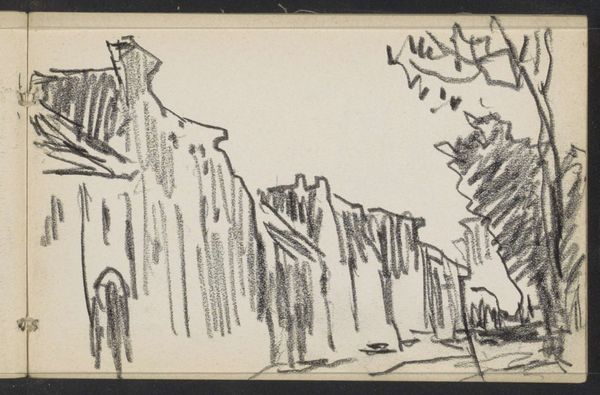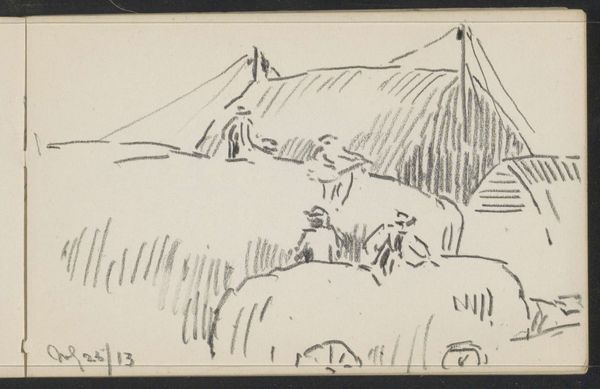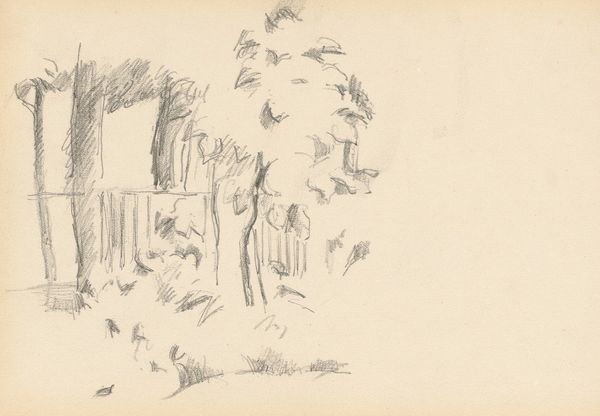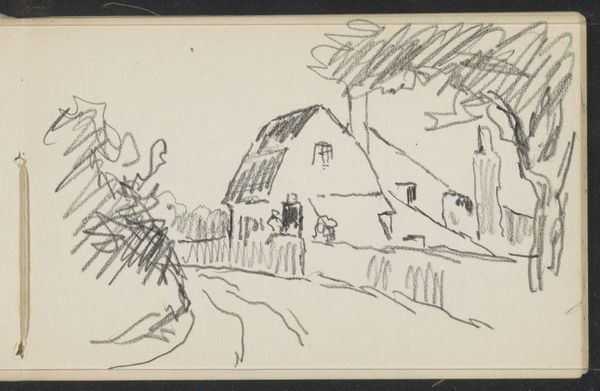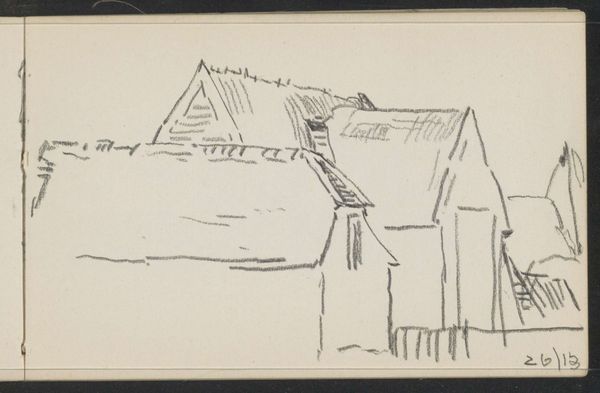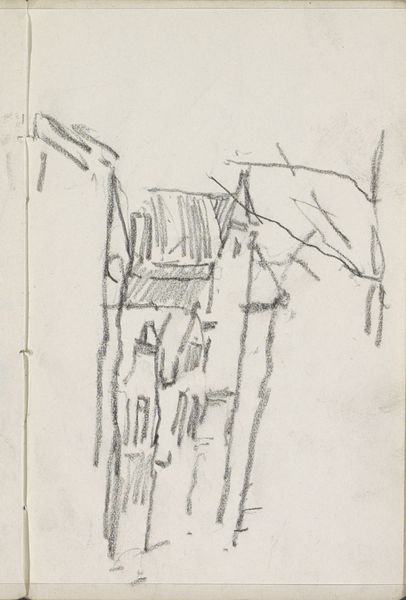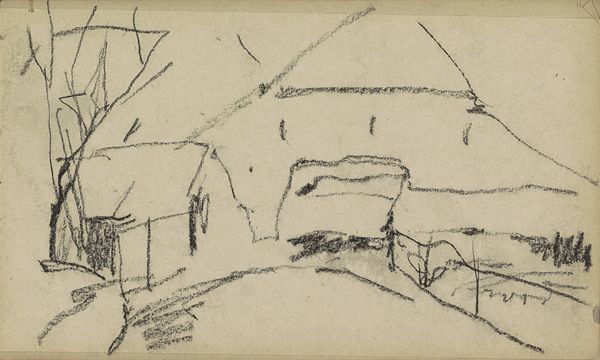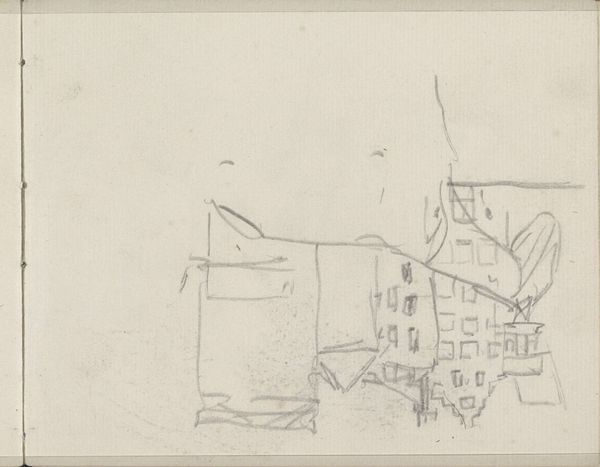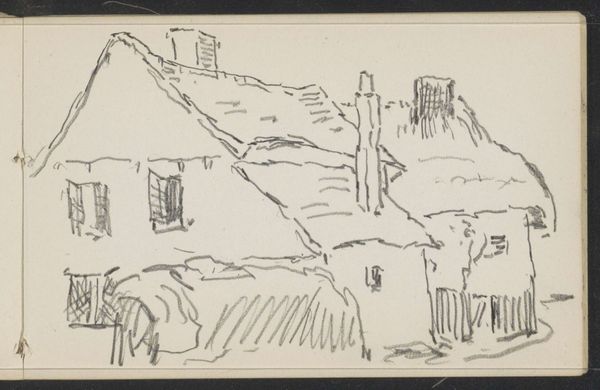
drawing, pencil
#
drawing
#
ink drawing
#
pen sketch
#
landscape
#
pencil
#
line
#
cityscape
#
realism
Copyright: Rijks Museum: Open Domain
Curator: Alexander Shilling's "Dorpsstraat," created in 1923, offers us a glimpse into a simple street scene rendered in ink and pencil. Editor: My first impression is of quietude. Despite the cityscape, there's an almost rural stillness to it. The sketch-like quality, those unfinished lines, enhance that feeling. Curator: Precisely! The sketchy nature, the lack of elaborate detail, actually heightens the scene's emotional resonance. Consider how the rapidly sketched figure seems almost bowed under an unseen weight—suggesting resilience amidst daily life. The starkness of the image, devoid of color, speaks of an introspective world. Editor: Introspection born from the labor, I'd argue. This looks like a working-class area. See how functional the architecture is, plain gabled houses. It looks almost hastily captured. Was it on site? And I'd love to know about the particular inks and pencils he was using – were they readily available or artisanal? That might help define Shilling’s intended audience and production circumstances. Curator: We know Shilling was associated with groups interested in portraying modern life and national identity. This work might reference traditional folk tales, placing value on local or regional subject matter by using images easily deciphered and accessible to all. The houses are somewhat generic, archetypal—inviting viewers to reflect on shared history. Editor: Perhaps, but there's also a certain uniformity in the lines suggesting mechanization. I find the repetition almost soul-numbing. Did the means of production allow people the chance to express individuality, or was the artistic production line, so to speak, part of the broader issues faced by this working village? It brings the question of whether art could escape the constraints of labour or instead become part of that same process. Curator: The open lines and rather minimalist composition suggest an honest attempt to simply document a fragment of reality. Perhaps it represents an earnest engagement with a familiar world. Editor: Fair enough. Ultimately, that simplicity opens the image up for our scrutiny, which invites us to ask some more material-based questions regarding Shilling's aims and values in 1923.
Comments
No comments
Be the first to comment and join the conversation on the ultimate creative platform.
